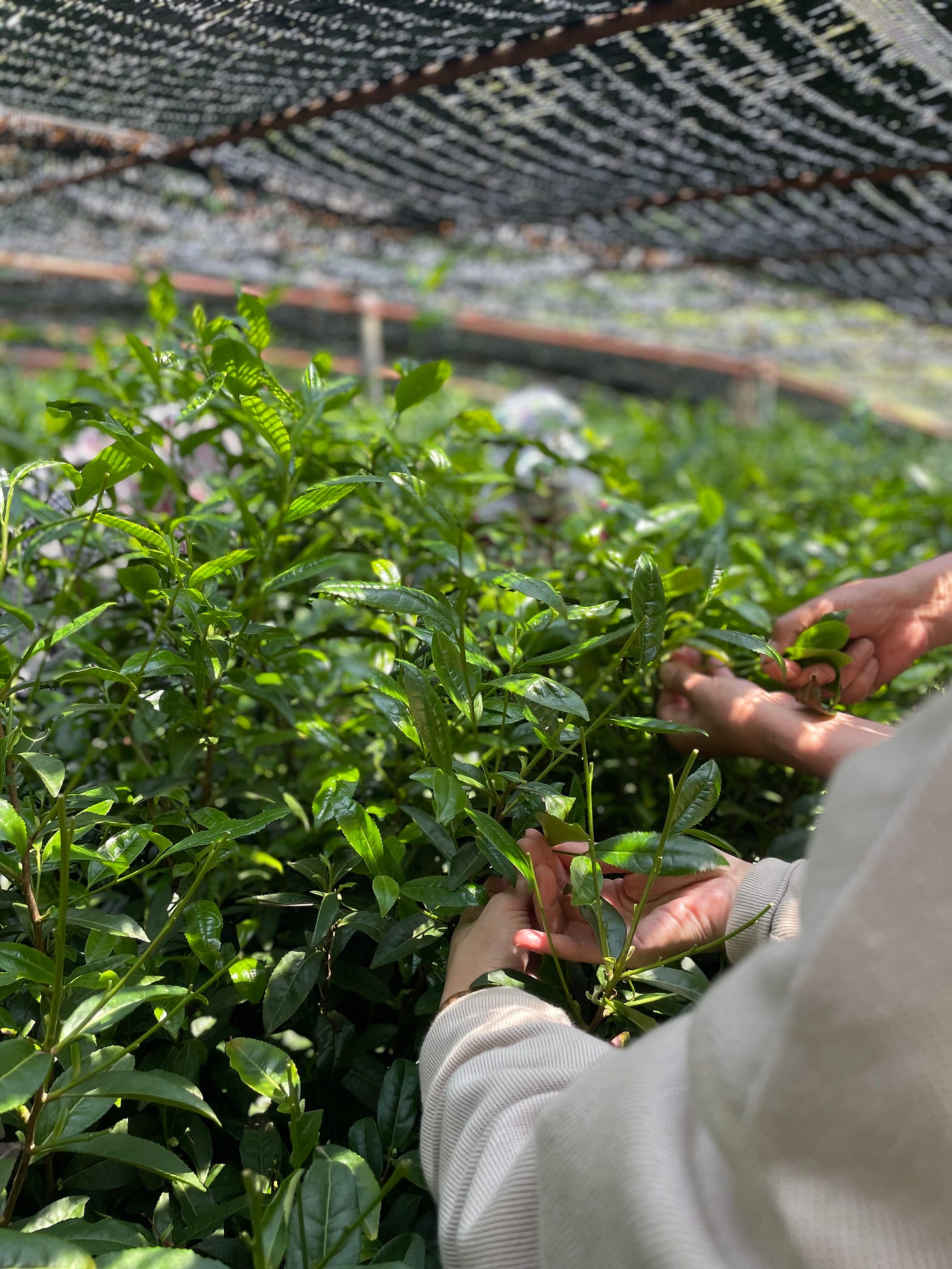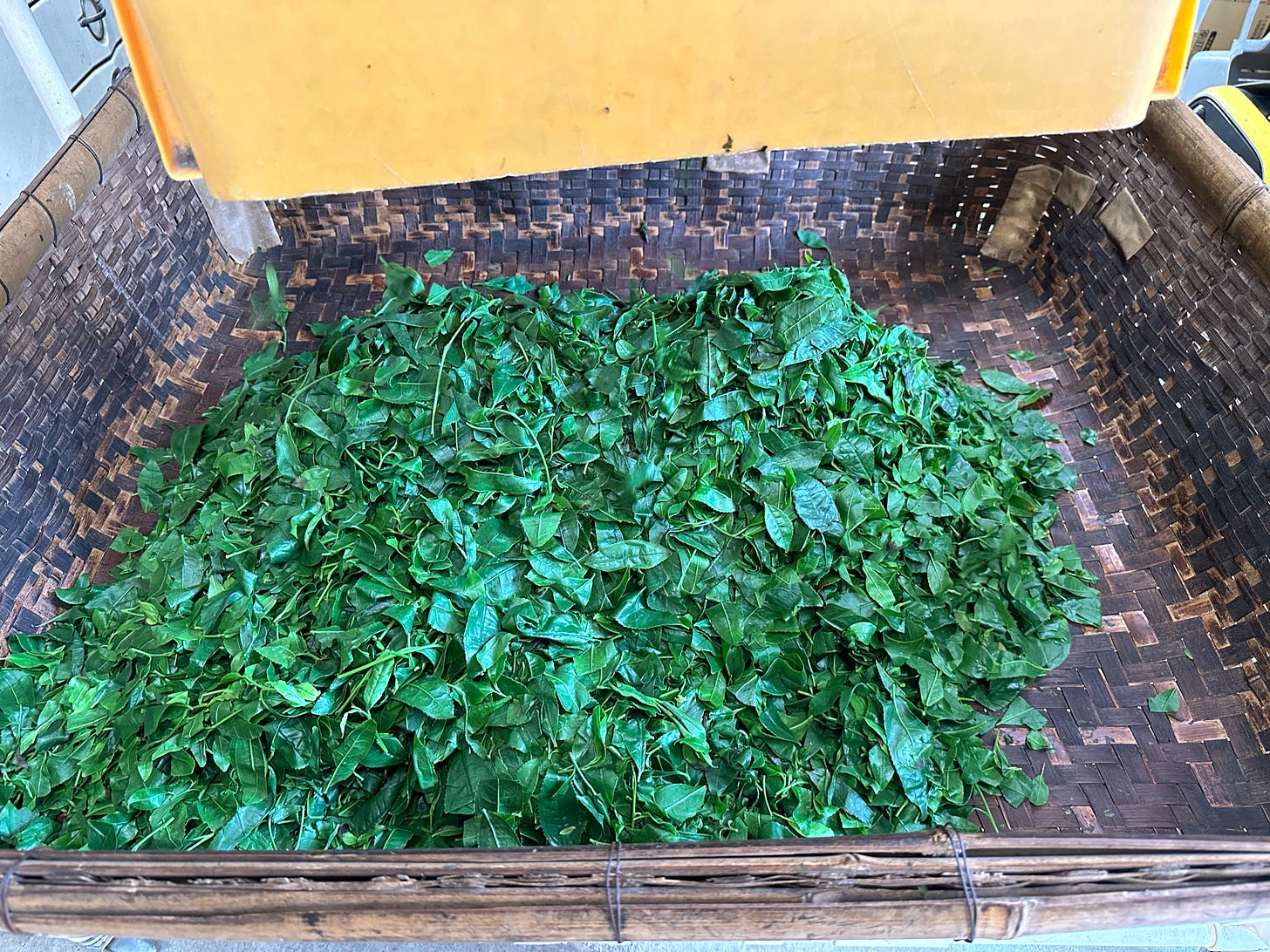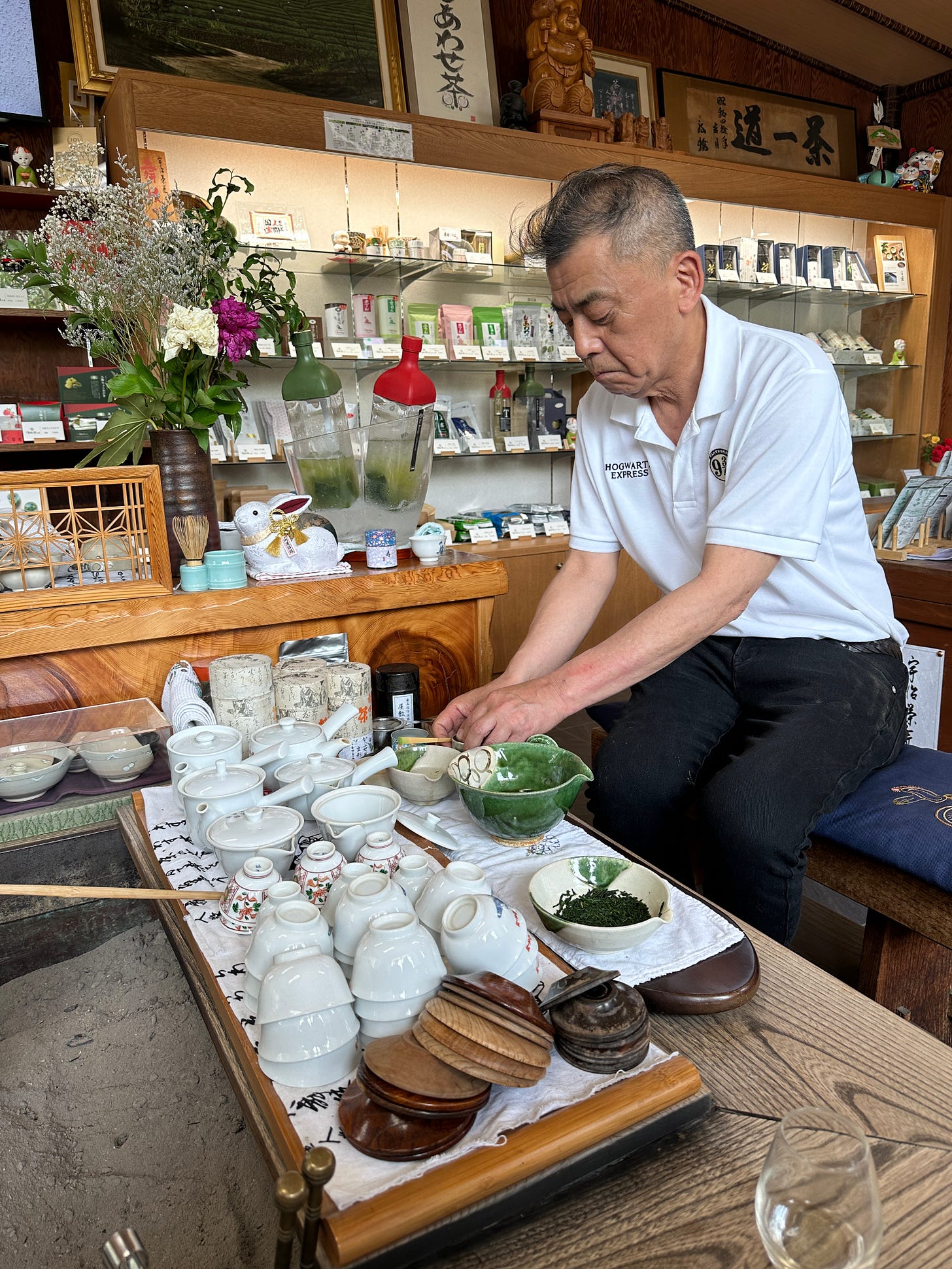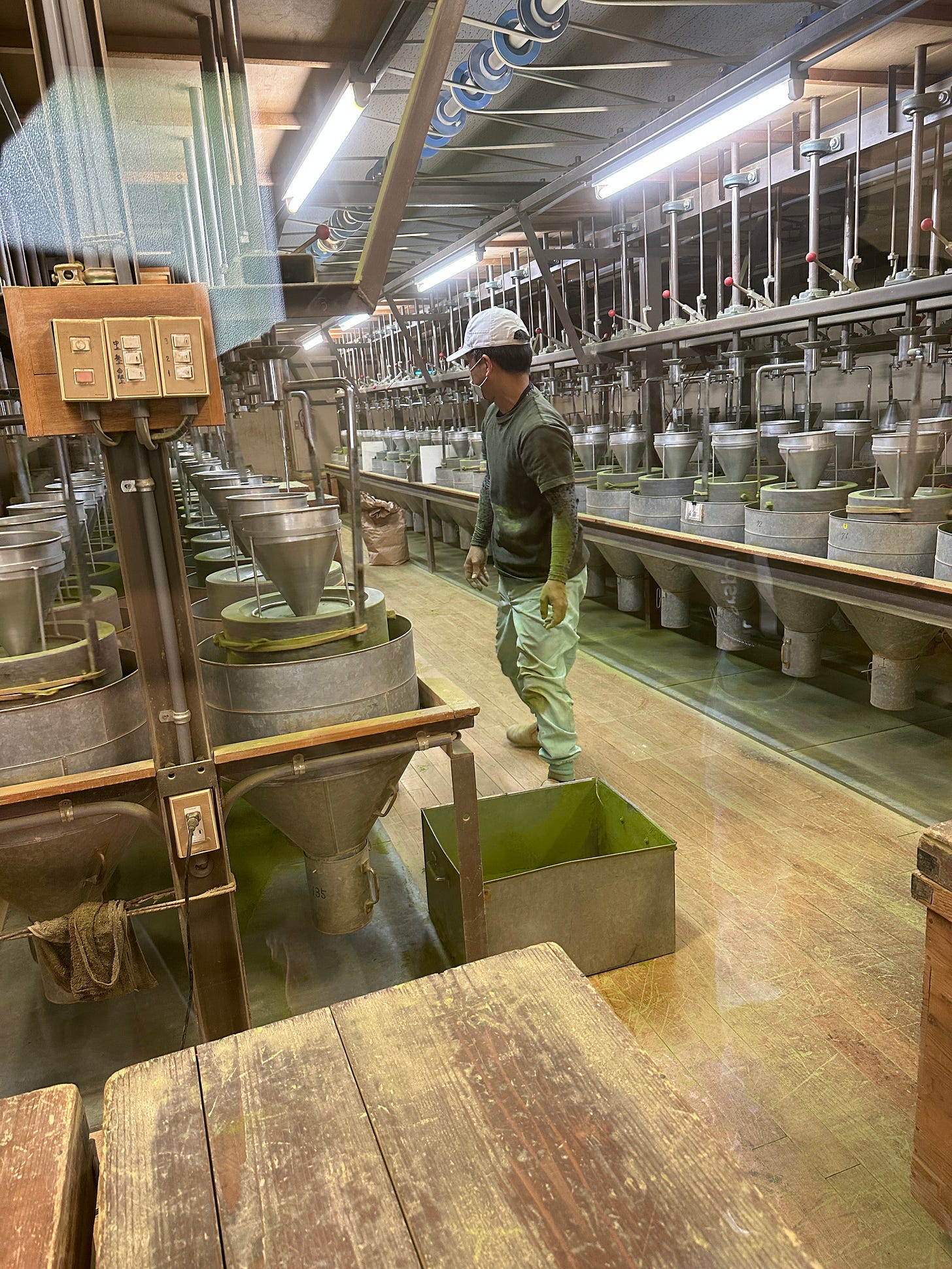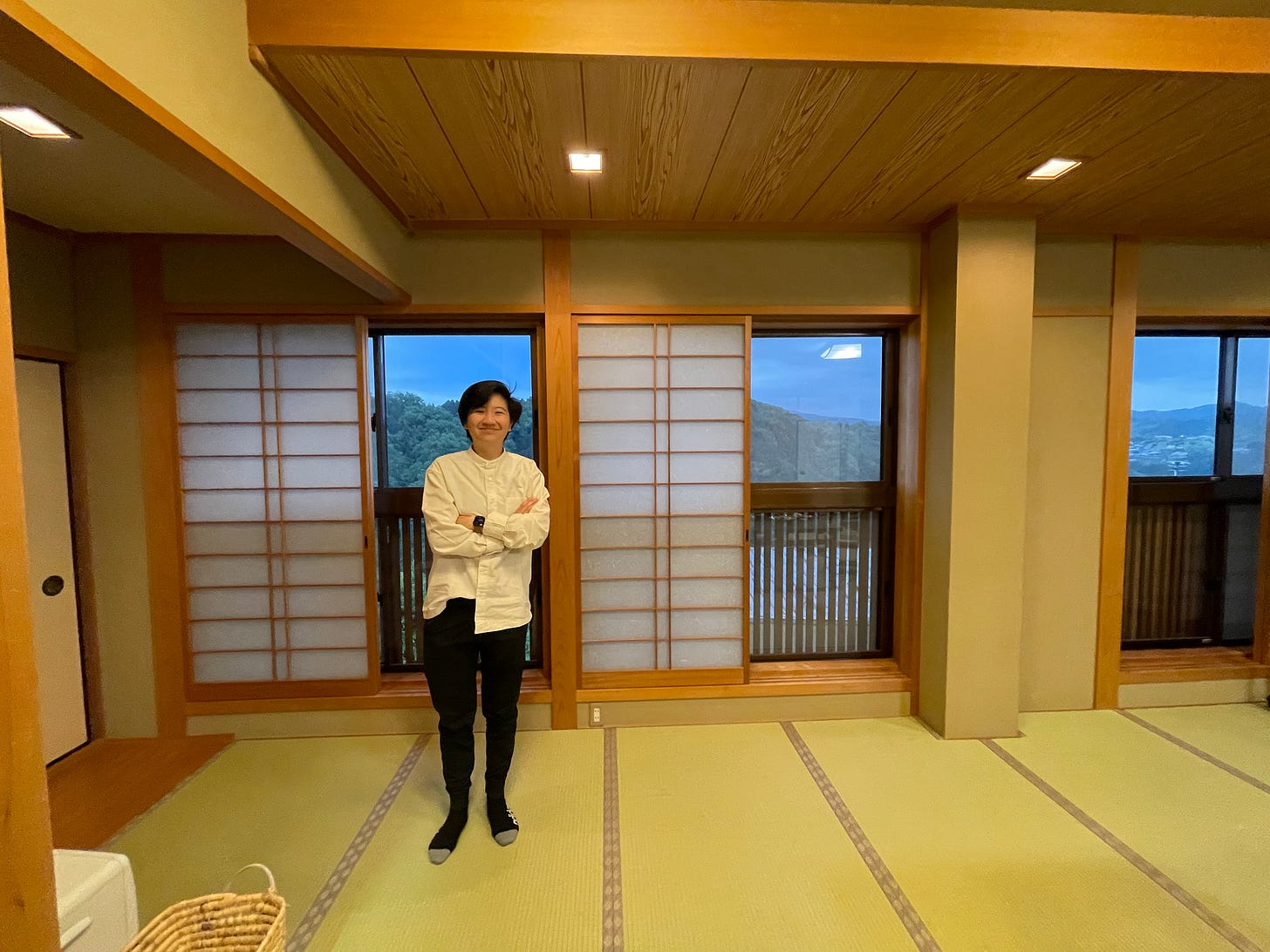Tea diaries: Shade-grown teas and hospitality in southern Kyoto
Building relationships and brewing skills with Masa in Kyōtanabe
This week, I’m continuing where we left off with our tea diaries. In our last tea diary, I detailed our trip to the PARU tea garden in Nara. Our next stop? Nearby Kyōtanabe, located about 30 minutes south of Kyoto by train, where we visited Masa san and Miki san. This stop was memorable for many reasons but the thing that stuck out to me the most was the unmatched omotenashi. As the day continued to unfold, it was evident how much preparation Masa and Miki put into every aspect of our visit.
Similar to many other industries in Japan, tea growing, processing, and selling in the Kyōtanabe region is very much a family affair. Masa san’s great uncle, Toshikazu Yamashita, helped put Kyōtanabe on the map for gyokuro production. Today, their facility is the smallest gyokuro factory in Japan. Side note: We’re excited to reserve some this year and share it with you all. Masa san also designed a custom gyokuro set for optimal drinking, and we hope to share that with you in the near future, too.
One of our first stops was to a small gyokuro farm, where we learned how to properly pick the tea leaves under the shade. Nowadays, handpicked teas aren’t as common because it takes a long time—which is very expensive—but the quality is unmatched. Due to efficiency and difficulty sourcing labor, many farmers have turned to machines for the picking process. While this isn’t a bad thing by any means, machines tend to pick up unwanted stems and leaves. On the other hand, you do get a higher yield with machines. Handpicking teas requires much more patience with lower yield, but you get exactly what you want (e.g. one bud and two leaves, or two buds and one leaf).

All the tea pickers were senior women, who got up before the crack of dawn to get to work. I was surprised to learn that one woman, Mariko san, is 86 years old. Her daughter works on the retail and operations side, which includes shipping packages to PARU monthly. They laughed and emphasized how it was a true family affair—they are all relatives of Masa san.
I plan to do a separate post about the Yamashita’s gyokuro production but wanted to share a few photos of what freshly picked teas look like. After the tea leaves are picked, they need to be steamed right away to stop the oxidation process. As I recalled during my conversation with Toki san, his goal is to get his own facility so he can control the quality of his leaves and get it processed immediately. This is one of the challenges that many new generation farmers face—lack of immediate access to production facilities.
Afterward, we visited a matcha farm, which was just a short drive away. Then we went to Masa’s office to taste a few of the 2023 teas and pick up on some new brewing skills. That’s one thing I really love about tea—you can always improve your brewing skills and adapt to different teas, tools, seasons, and company. For example, with matcha preparation, we learned that you don’t absolutely need to have a sifter. You can first make a paste with matcha and just a few drops of water, then add water and whisk as you normally would. This will work for serving multiple samples, a casual shot, or americano. I’d still recommend sifting for ceremonial use.
After our break, we visited a small facility, where some of our PARU matcha is produced. There were about 250 stone mills, and they mill 24 hours per day. There are shifts at night and in the morning to keep watch. As you can see, despite its history, the facility is pristine.

We passed through the famous village of Wazuka on our way to Minamiyamashiro for an unforgettable kaiseki dinner, which Masa san planned to celebrate our business partnership. The journey there was just as memorable—we were so high up in the mountains that GPS didn’t work. The restaurant owner had to guide us over the phone. We made it just before dark and was able to a beautiful view from the mountaintop.
Food wise, Lani and I agreed that it was the most either of us had ever eaten. The volume, however, didn’t affect the quality at all. It felt like fine dining and home cooking at the same time. From a sashimi plate to tai no shioyaki, or salt-covered sea bream (a celebratory dish) to soba, we were fortunate to have so much. At the end, Masa san had to refuse incoming food because our bellies were full. It felt really nice to chat with each other during this time. We talked about teas we’ve been enjoying lately, what customers have been saying, and our future goals. It was almost as if time had stopped and nothing else mattered. That to me is omotenashi at its finest—when you’re able to just enjoy the moment and the people around you. The day slowly ends, and your heart is filled with gratitude.
Thank you for reading. Drink a lot of tea this long weekend. :)
Cheers,
Amy




